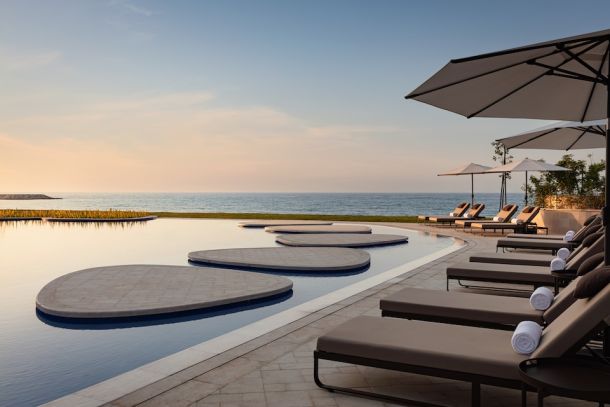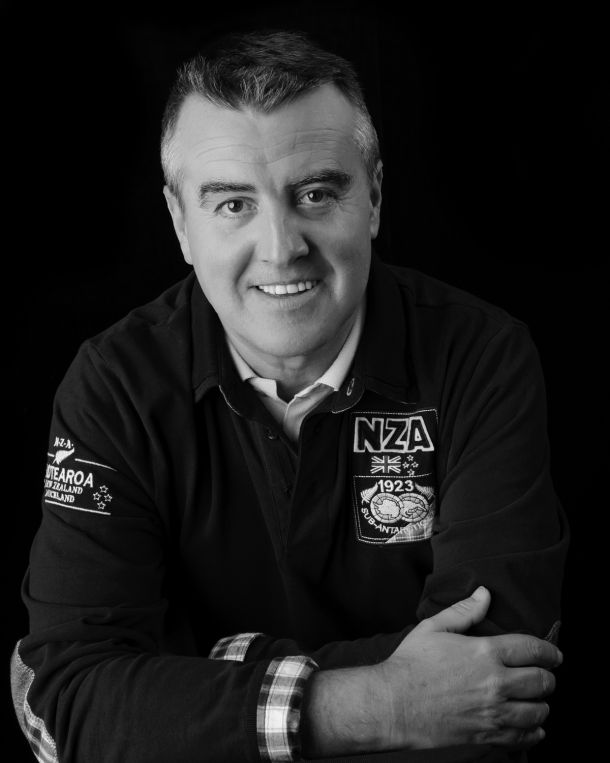INTERVIEW – Stijn Oyen, Managing Director Design Hotels
What is the traveler looking for when choosing to stay at a hotel in the Design Hotels collection?
They’re looking for something out of the ordinary, something beyond the usual hotel experience that feels aligned with their values and cultural preferences. Our travelers are purpose-led, meaning they’re curious but considerate: they seek immersion in a destination and possess a fervent desire to learn something new—returning home with stories and memories that can serve them far beyond their stay. Of course, this goes together an instinctual preference for thoughtful, unique design—an expectation all our travelers have.
What are the criteria you look for in a hotel to be a member of Design Hotels?
A critical factor is, of course, that each hotel must be led by forward-thinking design. But beyond that, each of our hotels are purpose-driven, culturally sensitive, and rooted in locality, and are led by a visionary owner—or ‘Original’, as we describe them—who pours their passion into each property.
Being a member of Design Hotels goes far beyond being visible on our website and brand channels—we are a true community of owners and hoteliers, who gather regularly to share ideas and support each other. In that way, sharing our values and appreciating our unique spirit is also important, so we continue to cultivate and nurture this global network of individuals who are unafraid to push the boundaries and experiment in hospitality.
Another important factor for us is properties that are rooted in sustainability. In 2021, we created 10 Conscious Hotel Principles to measure our progress as we move towards more environmentally and socially conscious practices. Our member hotels must meet at least five of these principles to be part of the Design Hotels collection.
This year, we have introduced a new project called Conscious Commitments – designed to help hotels to form a roadmap on measuring their own impact data, and to help them work towards a green certification. As an example, we’ve been working closely with Eremito, one of our properties in Italy, and they’ve just achieved B Corp Certification, meaning it meets exceptionally high sustainability standards, and always acts in the best interests of both people and the planet.
What differentiates Design Hotels from other brands?
Independent ownership is the number one defining factor of our hotels. Each property in our collection is spearheaded by an individual hotelier with a unique vision, and thoughtfully designed to bring this vision to life. Our hoteliers, or Originals as we call them, continue to inspire us with new ideas, fresh concepts, and ground-breaking design – creating culturally-immersive properties where the sense of that personal touch is clear to guests. Each property is unique and authentic, shaped by the Original at the helm.
What are the «goals» for Design Hotels in the next 5 years?
Our goal for the next five, and even ten years, is to maintain the innovative spirit of Design Hotels, and break new ground in defining the future of travel, culture, and design. We’ll continue to provide our hotels with the intelligence and network they need to sustain their journey as cultural pioneers— consistently setting the standard for creativity and excellence in hospitality. In terms of expansion, our sights are set on thoughtfully expanding our portfolio across the globe, with a focus on the Americas and Asia—led by our exceptional regional teams based in New York, LA and Singapore.
The future is looking incredibly bright for Design Hotels, I’m thrilled to be leading such a passionate team as we continue to grow and expand into exciting new destinations—bringing our distinctive collection to an even wider range of curious, purpose-led travelers.
Have you detected any important trends in the luxury hospitality sector?
We prefer to look at the big picture at Design Hotels—supporting our community of hoteliers to implement creative ideas in the short-term, but looking further ahead, sharing movements with a five-to-ten-year horizon so they remain at the forefront of hospitality.
To that end, we’ve been exploring some of these long-term shifts via our think tank, Further, which is a space where we share trends with our hoteliers and beyond.
Last year, we published our first annual trend report, the Further Forecast, where we outlined six macro trends, we believe will define the future of travel and culture in the years ahead. This covered topics from awe to AI, ancestral wisdom to ecology.
It’s been really interesting to look into each of these trends and see how they’re translated into hotel design and programming, for example, a renewed focus on sustainability and a need to be connected to nature has led to a rise in biophilic and regenerative design, as seen in Boca de Agua, one of our recent openings in Bacalar, Mexico.
One of the stand-out trends we noticed was the rise of neuroaesthetics, which we recently dived further into in our first in-depth cultural study. In the report, we dive into scientific research about how design elements such as color, lighting, spatial layouts, textures, and materials can influence our emotions and perceptions of a space—and how, when you design with feeling before form, spaces can have a profound impact on our personal and collective wellbeing.
We’ve had an overwhelmingly positive response to this study, demonstrating just how much it resonated within our community and beyond. It’s evolved into somewhat of a manifesto, explaining how hoteliers, architects and designers (anyone creating social spaces, really) can craft spaces that go beyond both the aesthetic and functional needs of the space to create places that resonate and connect with humanity on a much deeper, more intuitive level.
When you stay in a hotel, what do you give the most importance to?
As a former General Manager and Chef, great food and drink, buzzing public spaces and an energetic crowd are incredibly important. I recently stayed at Tortue in Hamburg and was blown away by the three restaurants on property. I had dinner there on a Monday night and it felt like a Friday—it was very busy with exceptional food and service!
What is your favorite hotel?
That’s an impossible question! It’s all down to context: why are you traveling, where are you traveling, and what experience are you looking to have. If you ask me my favourite hotel when I’m traveling for leisure or with my family, my answer will be totally different to if I am traveling alone for work, because my needs are different.
At the moment, I’m really enjoying visiting as many of our properties as I can to understand the breadth of our portfolio, and each of the owners behind them. Recently, my travels have taken me to Greece, Mexico, Japan, Hong Kong, South Tyrol and many more destinations.
I couldn’t possibly compare or pick a favorite, but the company I was with at the time did define a couple of stand-out moments. For example, Manna Hotel in Peloponnese took ten years to come to fruition, and every detail has been painstakingly poured over by the owner Stratis, who dreamt of transforming the building into a hotel since he was a child. His vision, combined with the exceptional local food on offer, and the stunning design by local designers K-Studio made it particularly memorable.
Equally, while I was in Japan, the team behind TRUNK(HOTEL) really showed us the hidden gems of Tokyo and some of the best food I’ve ever eaten! You can tell, in how they’ve translated that local experience into their hotels, that they really understand how to balance tradition with contemporary elements to create a truly unique guest experience. That is an artform, in my opinion.
Finally, my most recent trip to Mexico took me to Otro Oaxaca—a Grupo Habita property. I’ve always been a fan of Mexican culture and cuisine, and I was so impressed by how Otro Oaxaca perfectly captures the locale of Oaxaca and expresses it in such a sensitive, yet accessible way to travelers. The rooftop overlooking Templo de Santo Domingo de Guzmán is also one-of-a-kind!
Could you give me an example of a “One of a Kind” hotel experience?
To create a one-of-a-kind experience, it must be authentic. For hotels, this could come from a unique and thoughtful design concept, or it could be experiential activities that encourages cultural or immersion in nature. It’s about doing things out of the ordinary, being authentic, and staying ahead of the curve to create these incredible, unique experiences for guests.
I recently returned from Vigilius Mountain Resort in South Tyrol, which was a true one-of-a-kind experience. The hotel can only be accessed by cable car and is located in the heart of a beautiful nature reserve with no cars around. You just feel instantly connected to the natural environment, whilst simultaneously feeling a sense of escapism—it’s the perfect hideaway. The hotel has been thoughtfully designed by architect Matteo Thun with a focus on bringing the outdoors in. You just instantly feel the passion and thought that’s gone into this incredible property through its owner, Ingrid. It’s truly unique!

Newsletter
Follow Us
“I have the simplest tastes. I am always satisfied with the best.”




